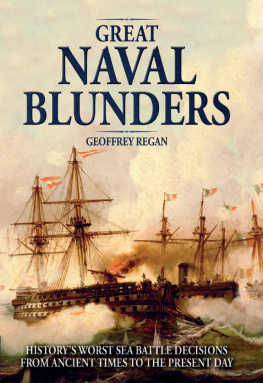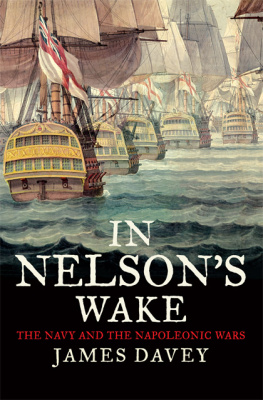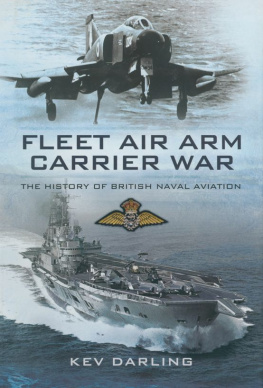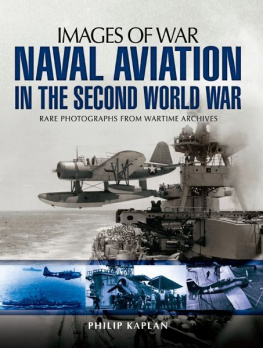AMERICAS GREATEST NAVAL VICTORY?
Battle of the Chesapeake, September 1781
BY WILLIAM TERDOSLAVICH
The winds and the waves are always on the side of the ablest navigators.
Edward Gibbon, 17371794
I n the summer of 1781, the battered remnants of Lord Charles Cornwalliss army staggered into Virginia more dead than alive. They had just spent much of the year chasing Nathanael Greenes small force of Continentals up from the Carolinas. The Americans won no battles under Greenes command, which ironically made him the deadliest opponent the British ever faced. Every time Greene lost, he retreated faster than Cornwallis could pursue, through semiwild country that afforded little in the way of supply or shelter. Greene managed to keep his ragged force fed and moving, while Cornwalliss redcoats became tattered from long marches on short rations.
Upon reaching Virginia, Cornwallis received orders from his superior, General Henry Clinton in New York. They were very clear: Use your forces to establish a naval base somewhere along the shores of Chesapeake Bay and await the arrival of reinforcements. The Royal Navy will save the day!
Cornwallis abandoned his position at Newport, Virginia, moving his forces to a place called Yorktown, where the York River empties into Chesapeake Bay. He had nothing to fear. Every American army Cornwallis had ever faced had run away, allowing him to bag Georgia, South Carolina, and North Carolina for the Crown. Other subordinates had suffered defeat in smaller battles against the Americans, but the British did not see their position as a losing one. With fresh troops from New York, Cornwallis could march up to the top of the Chesapeake and cut off the land route between the northern and southern colonies.
Do this and Great Britain wins. There will be no United States.
They had only to hold some ground for a naval base and wait for help. The British navy was the finest in the world. Nothing could stop it. Help was a sure thing.
The Naval Balance of Power
A warship of the eighteenth century was a very different creature from the ones we know today. This was an age when ships were made of wood and driven by sails mounted on two or three masts, when guns fired solid iron balls aimed at the enemys hull or chained shot at his rigging.
The seventy-four-gun ship of the line was the basic measure of naval strength. Mounting an array of 24-pound and 36-pound guns on two decks, this vessel was designed to dish out punishmentand take itwhile sailing in a straight line with its sister ships, parallel to the enemy, exchanging fire.
The other ship that fleets of the day relied on was the frigate, a smaller, faster vessel mounting anywhere from twenty-four to thirty-eight 18-pound guns on a single deck. Frigates would typically sail ahead of a fleet, looking to make contact with the enemy, then get out of the way for the larger ships of the line to duke it out.
The American Revolution was a war between the Crown and the rebels until 1778, when France, Spain, and the Netherlands all joined the fight. Great Britain then found itself fighting a world war. Its fleet of 150 ships of the line had to protect the home country, Gibraltar, the Americas, and possessions in the Caribbean and India. More than fifteen years of penny-pinching left the fleet ill-equipped and in poor condition to contest naval supremacy with two near-peer rivals, Spain and France, which brought to war fleets with 60 and 80 ships of the line, respectively, for a combined fleet of 140.
The British found themselves in a bad strategic position. After assigning ships to protect the home country and various overseas possessions, they had nothing left to blockade the French ports and keep their warships bottled up. Time and again, the French had no trouble dispatching warships to help their American ally, vexing the British to no end.
How to Make Trouble
In 1778, the French managed to dispatch twelve ships of the line and five frigates under Admiral Charles Henri dEstaing, looking for trouble in American waters. After unsuccessfully probing New York, the fleet made its way to Newport, Rhode Island, where the British had stationed a 5,000-man garrison, surrounded by not-so-friendly colonists. British admiral Richard Howe shadowed dEstaing all the way there. Gale-force winds robbed both fleets of the chance to fight it out. Lacking a safe harbor, dEstaing retreated back to France. So long as the Royal Navy ruled American waters, the French could not land an army. British troops could be shifted by the Royal Navy anywhere they were needed and supported anywhere they held a port.
Mariot Arbuthnot replaced Howe as British admiral for the American station. Confusion was reborn, and it came down to signal flags. The Royal Navy had a semistandard way for admirals to issue orders to the fleet by flying colored flags for standard orders, with the meaning of the flag changing depending on whether it was flown from the mizzenmast instead of the mainmast or foremast. Howe had written up a signal book that clarified the mess by relying on three-digit codes for standard orders, and he wrote the book in such a way that the menu of orders constituted a doctrine for naval battle. Arbuthnot combined aspects of Howes system with the navys semistandard practice.
This change confused the captains, a problem caused by the Royal Navys Fighting Instructions, which advocated the practice of forming the fleet in line-ahead to exchange shots with the enemy line. This mandatory tactic often resulted in inconclusive battles. The French did not mind this, as their navalists believed it was more important to have a fleet handy than to destroy the enemys ships. The French navy could always fight another day, or, short of that, maintain a strategic stalemate facing off against the British. Once you destroy the enemy fleet, the sea is yours by default. You have total freedom of action to move anything (goods, troops, etc.) anywhere. But this was not a sure thing when the British and French fleets faced stalemate in American waters. Any advantage would be temporary, depending on a fleet being in the right place at the right time with no enemy present.
Lieutenant General Henry Clinton, who now commanded the British Army in America, abandoned Newport in 1779, recalling the 5,000-man garrison there to strengthen New York. Admiral George Rodney, an able strategist in his own right, called this the worst mistake of the war. Narragansett Harbor was the best anchorage on the east coast, as New York was compromised by the bars at Sandy Hook, which could be cleared only at high tide. The French did not forgo the opportunity to fill a British vacancy, sending Admiral Charles-Henri-Louis dArsac de Ternay with seven ships of the line to take Newport and land another 5,000 men under the command of General de Rochambeau. It was July 1780, and Americas French allies were finally in the war with ground troops. The British lost no time blockading Newport, thus bottling up de Ternays squadron. But Clinton would not march up from New York to retake Newport, fearing Washington would slip into the city while the British were away.
The revolution would reach its nadir in 1780. Washington was nearly arrested and handed over to the British by the traitor Benedict Arnold at the fortress of West Point. If successful, Arnold would have given the redcoats both Washington and control of the Hudson River. The French second division could not sail for the southern colonies, being temporarily blockaded at Brest by the Royal Navy. Revolutionary general Horatio Gates proved his incompetence in the Southern Department, losing at Camden and personally outrunning his routed forces. Recruits were few. Money and supplies were running out or nonexistent. The revolution could die out by simply going bankrupt. That meant General Washington had to go for broke in 1781. He was lucky that factors beyond his control fell into place. And he was skilled enough to take advantage of that change in fortune.














![Fawcett - How to lose the Civil War : [military mistakes of the War between the States]](/uploads/posts/book/92687/thumbs/fawcett-how-to-lose-the-civil-war-military.jpg)
